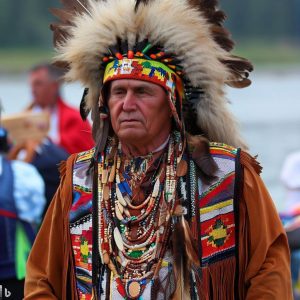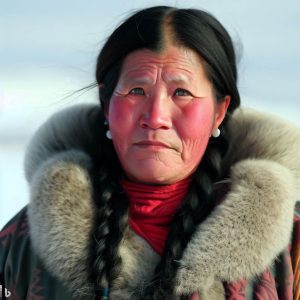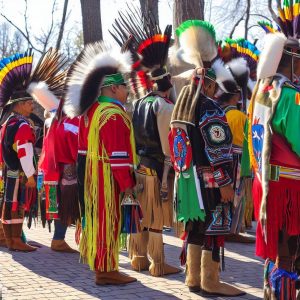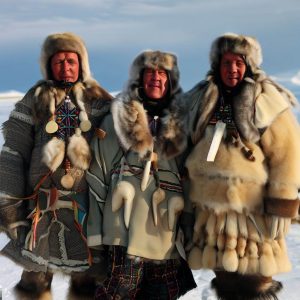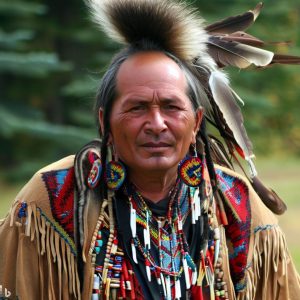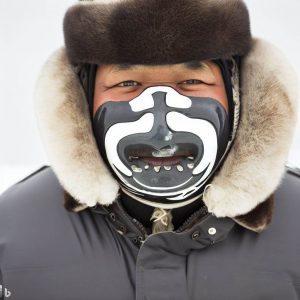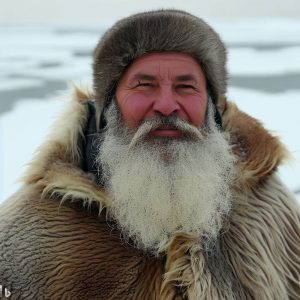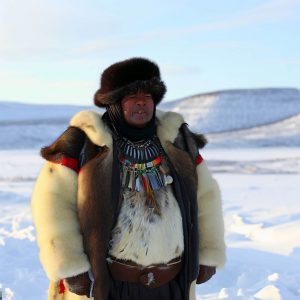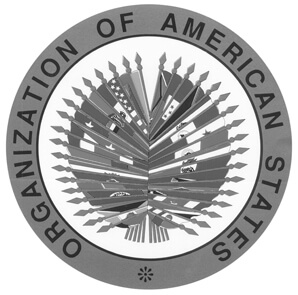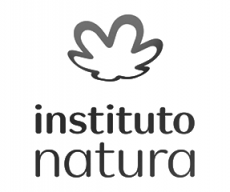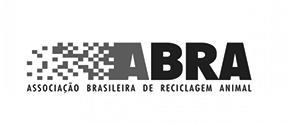Inuktitut Translation Services
It is estimated that there are 35,000 people in Canada who speak Inuktitut.
The Inuktitut language is spoken in parts of the provinces of Newfoundland and Labrador, Quebec, Manitoba, Nunavut (where it is recognised as an official language), and in the Northwest Territories.
Inuktitut has over eight different dialects. The Inuktitut dialects change gradually over a geographical area. Speakers of neighbouring dialects can understand each other, but those further apart may not be able to.
Get an estimate for our Inuktitut language translation services
Journey Through Ice and Time: The Ancient Origins of the Inuktitut People
The Arctic is a land of mystery, where the cold, harsh climate has given rise to an incredibly resilient and adaptable culture - the Inuktitut people. For thousands of years, they have survived and thrived in the unforgiving Arctic environment.
In this article, we will delve into the ancient origins of the Inuktitut people and explore their fascinating migration across the Arctic regions.
The Inuktitut People: A Story of Survival
The Inuktitut people, also known as Inuit, are a group of culturally and linguistically related Indigenous peoples inhabiting the Arctic regions of Greenland, Canada, and Alaska.
They are part of the larger Eskimo-Aleut language family, which also includes Yupik and Aleut peoples. The Inuktitut people's history is a testament to human adaptability and resilience in the face of extreme environmental challenges.
Get an estimate for our Inuktitut language translation services
A Journey Through Time: The Thule Ancestors
The ancient origins of the Inuktitut people can be traced back to the Thule culture, which emerged around 1,000 CE in the Bering Strait region, between Alaska and Siberia.
The Thule people were skilled hunters, whalers, and craftspeople who adapted well to the challenging Arctic environment.
The Thule culture expanded eastward across the Arctic, driven by the pursuit of marine mammals and other resources.
Over centuries, the Thule people replaced the earlier Dorset culture and eventually gave rise to the modern Inuit populations we know today.
Migrating Across the Arctic: Adaptation and Innovation
The Inuktitut people's migration across the Arctic was made possible by their exceptional adaptation skills, technological innovations, and cultural practices.
They developed the iconic igloo, a temporary snow shelter used during hunting expeditions, and the qamutiik, a sled for traversing the rugged terrain.
They also crafted an array of hunting tools, such as harpoons, knives, and bows, that enabled them to hunt seals, walruses, and whales.
The Inuktitut people relied on their intimate knowledge of the environment, including ice conditions, animal behavior, and weather patterns.
This knowledge, passed down through generations, allowed them to navigate and survive in the ever-changing Arctic landscape.
Get an estimate for our Inuktitut language translation services
Cultural Resilience: The Inuktitut People Today
Today, the Inuktitut people continue to maintain strong connections to their ancient origins, preserving their language, customs, and traditional way of life.
Despite the challenges of modernization and climate change, they remain steadfast in their commitment to their culture and heritage.
As the Arctic experiences rapid changes due to global warming, the Inuktitut people's deep understanding of their environment is more important than ever.
Their ancient wisdom offers valuable insights into sustainable living and adaptation in the face of environmental challenges.
The story of the Inuktitut people's ancient origins and migration across the Arctic regions is one of human adaptability, resilience, and innovation.
Through their remarkable journey, they have forged a unique culture that continues to thrive in the harshest of environments.
As we face a rapidly changing world, the Inuktitut people's ancient wisdom and ability to adapt serve as an inspiration to us all.
Exploring the Rich Cultural Heritage of the Inuktitut People
The Inuktitut people, or Inuit, have a rich and diverse cultural heritage, born from their unique way of life in the Arctic regions.
Despite the challenging environment, they have created a vibrant and enduring culture, encompassing art, music, and traditional practices.
In this article, we will delve into the fascinating world of Inuit culture and explore the incredible contributions they have made in art, music, and their traditional way of life.
Get an estimate for our Inuktitut language translation services
Aesthetic Expressions: Inuit Art
Inuit art is characterized by its distinct style, deeply rooted in the natural environment, and influenced by the Inuit's traditional lifestyle.
The art forms include sculpture, printmaking, and textiles, which often depict animals, myths, and daily life.
Soapstone carving is a prominent art form, with artists skillfully transforming the stone into intricate sculptures of animals, humans, and mythical beings.
The unique qualities of soapstone, such as its softness and the variety of colors, make it an ideal medium for expressing the Inuit's deep connection with their environment.
Another significant art form is printmaking, which gained popularity in the mid-20th century. Inuit printmakers create captivating images that often incorporate Inuit mythology, wildlife, and aspects of traditional life.
These prints have become highly sought-after by collectors worldwide, elevating Inuit artists' work to the global stage.
The Sound of the Arctic: Inuit Music
Inuit music is an essential part of their cultural heritage, with traditional songs and throat singing playing a vital role in preserving stories, history, and language.
Inuit throat singing, or katajjaq, is a unique form of musical expression, primarily performed by women. This mesmerizing vocal art involves two singers producing guttural sounds and imitating the natural world, such as wind or animal calls, in a rhythmic pattern.
Throat singing is often competitive, with the singers trying to outlast each other or make each other laugh.
Traditional Inuit drum dancing is another important aspect of Inuit music, where performers use a large, circular, frame drum to create a rhythmic beat.
This dance form serves various purposes, including storytelling, celebration, and healing ceremonies.
The Traditional Inuit Way of Life
The Inuktitut people have developed a remarkable way of life, adapted to the harsh and unforgiving Arctic environment.
Hunting and fishing have been essential to their survival, with seals, walruses, caribou, and fish as primary food sources.
The Inuit have devised ingenious hunting methods and tools, such as the kayak, umiak, and harpoon, that have enabled them to thrive in the Arctic.
Traditional Inuit clothing is made from animal skins and furs, providing exceptional insulation and protection from the elements.
The parka, or anorak, is a quintessential Inuit garment, designed to keep the wearer warm and dry in the coldest conditions.
Inuit spirituality is deeply intertwined with the natural world, with animistic beliefs in the interconnectedness of all living beings.
This reverence for the environment is evident in their sustainable hunting practices, which emphasize respect for the animals and the land.
Get an estimate for our Inuktitut language translation services
The Inuktitut people's rich and diverse cultural heritage is a testament to their resilience, adaptability, and creativity in the face of the challenging Arctic environment.
Their art, music, and traditional way of life reflect a deep connection to their surroundings, passed down through generations.
As we celebrate the Inuit's remarkable contributions to global culture, we also recognize the importance of preserving and nurturing this unique heritage for future generations.
Arctic Linguistics: Unraveling the Inuktitut Language and Its Place within the Eskimo-Aleut Family
The Inuktitut language, spoken by the Inuit people across the Arctic regions of Greenland, Canada, and Alaska, is a captivating linguistic treasure.
As a member of the larger Eskimo-Aleut language family, it shares linguistic roots with other Arctic languages, revealing fascinating insights into the history and culture of the people inhabiting this remote and challenging environment.
In this article, we will delve into the Inuktitut language, its place within the Eskimo-Aleut language family, and its relationship with other Arctic languages.
The Eskimo-Aleut Language Family: A Brief Overview
The Eskimo-Aleut language family is a group of languages spoken across the Arctic regions of North America, Greenland, and Russia.
It is divided into two main branches: the Eskimo languages, which include Inuit and Yupik, and the Aleut language, spoken by the Aleut people of Alaska and the Aleutian Islands.
Despite the vast geographical distances separating the speakers of these languages, the Eskimo-Aleut languages share common linguistic features, suggesting a shared ancestry and historical connections among the peoples of the Arctic.
Get an estimate for our Inuktitut language translation services
Inuktitut: A Vibrant Arctic Language
Inuktitut, one of the principal languages within the Eskimo branch, is spoken by around 65,000 Inuit people across Greenland, Canada, and Alaska.
It is further divided into several dialects, reflecting the diverse Inuit communities inhabiting this vast Arctic region.
The Inuktitut language is characterized by its complex grammar and rich vocabulary, which includes an extensive array of terms for describing the natural environment, such as snow, ice, and weather conditions.
This linguistic richness reflects the Inuit people's deep connection to their surroundings and their expertise in navigating and surviving in the Arctic.
Writing Systems: Syllabics and Roman Orthography
Inuktitut has two primary writing systems: the Inuktitut syllabary, based on the Cree syllabics, and the Roman orthography.
The Inuktitut syllabary, introduced by European missionaries in the 19th century, is a unique script consisting of symbols that represent combinations of consonants and vowels.
This script is primarily used in Canada, where it is an official language in Nunavut and the Northwest Territories.
The Roman orthography, which uses the Latin alphabet, is more common in Alaska and Greenland. Both writing systems coexist and serve to maintain and promote the Inuktitut language in written form.
Get an estimate for our Inuktitut language translation services
Linguistic Connections: Inuktitut and Other Arctic Languages
As a member of the Eskimo-Aleut language family, Inuktitut shares linguistic features with other Arctic languages, such as Yupik and Aleut.
This includes similar grammatical structures, shared vocabulary, and common phonological features.
These linguistic similarities reveal historical connections among the peoples of the Arctic, suggesting a common ancestry and shared cultural heritage.
The study of the Inuktitut language and its relationship with other Arctic languages helps linguists and anthropologists understand the complex history of human migration and cultural exchange in the Arctic regions.
Furthermore, it sheds light on the resilience and adaptability of the Inuit people and their language in the face of environmental and cultural challenges.
The Inuktitut language, with its unique linguistic features and place within the Eskimo-Aleut language family, offers a fascinating glimpse into the rich cultural heritage and history of the Inuit people.
As we explore the linguistic connections between Inuktitut and other Arctic languages, we gain a deeper appreciation for the remarkable human story unfolding in the Arctic—a story of survival, adaptation, and cultural resilience.
This is why it is so important to use a native speaker for Inuktitut translation.
Because style, tone, accuracy and words with multiple meanings can be easily confused, it is important to ensure the accuracy of the translation.
All of our translators are qualified native speakers. We can guarantee that your project will be translated by a native speaker of the target language.
TripleTrad Canada maintains elevated expectations for all of the projects we take on and follows a unique, multi-step proofreading and verification process for each project.
Our handpicked native speakers are able to identify and avoid even tiny errors that are grammatical or cultural in nature. This ability is particularly important when it comes to Inuktitut translation.
We know how hard it can be to find an exceptional translator when you need one. That’s where we come in: we give your international business endeavours direction and power, enabling you to be just as effectively overseas as you are locally.
We work as if we were a translation department within your own company, except you don’t need to worry about the hassles of contracting workers or finding professional translators for your business documents.
You only pay per project, with no recurring or monthly fees.
At TripleTrad Canada, we are passionate about helping your business and projects gain publicity and new audiences both locally and internationally.
If you have any questions about our Inuktitut translation services, reach out to us at +1 (647) 499-1178 (Toronto area and Canada). You can also contact us on Whatsapp (click here). 🙂
Get an Estimate Now
You might also be interested in:

Certified Translation Services

Accurate Translation Services in Canada

Fast Response Time: We Live in the Future
Projects in 2023
5720
Language combinations
312
Team members across the planet
1200
Happy clients worldwide
3245
WHO WE SERVE
TripleTrad is a thriving business with over 10 years of delivering comprehensive translation services across 300 languages to both fledgling and long-established organizations. Our services have assisted companies in fields such as:
- Advertising, Architecture
- Design, Education, Engineering
- Financial, Legal
- Manufacturing, Medical
- Multimedia, Technology
What clients say about us
"Reliable service"
96%
"Amazing turnaround time"
93%
"Accurate"
94%

Professional translation services

Reliable support



